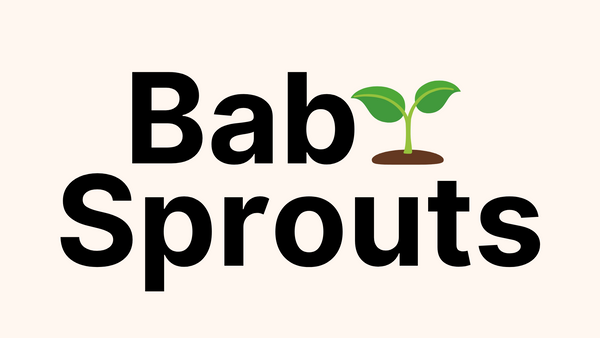
Drool-Proof Your Baby: The Ultimate Guide to Teething Bibs and Mittens
Understanding Teething: Causes and Symptoms
When Does Teething Start?
Teething is a natural process that all babies go through. It usually begins around 6 months of age. However, some babies may start teething as early as 3 months or as late as 12 months. Every baby is different, so don't worry if your little one's timeline varies.

Teething typically follows a pattern. The bottom front teeth often appear first. Then, the top front teeth emerge. After that, the other teeth gradually come in. Most children have all their baby teeth by age 3.
Remember, teething is not a race. Some babies may get several teeth at once. Others might have long breaks between new teeth. Both scenarios are normal.
Recognizing the Signs of Teething Pain in Babies
Teething can be uncomfortable for babies. Look out for these common signs:
- Excessive drooling
- Chewing on objects
- Irritability or fussiness
- Swollen or tender gums
- Slight fever (less than 101°F)
- Changes in eating or sleeping habits
- Rubbing their cheeks or pulling their ears
Not all babies show these signs. Some may breeze through teething with little discomfort. Others might be more sensitive. If you're unsure, consult your pediatrician.
It's important to note that high fever, diarrhea, or vomiting are not typical teething symptoms. If your baby experiences these, seek medical advice. They may indicate another health issue.
Choosing the Right Teething Bibs and Mittens
What to Look for in Teething Bibs
Teething bibs are essential for managing drool and keeping your baby dry. Here's what to consider:

- Absorbency: Look for bibs made from highly absorbent materials. Cotton, bamboo, or microfiber are good options. They soak up drool effectively.
- Waterproof backing: A waterproof layer prevents moisture from seeping through. This keeps clothes dry and reduces skin irritation.
- Adjustable fit: Babies grow quickly. Choose bibs with adjustable closures. They'll fit your baby for longer.
- Durability: Teething bibs get a lot of use. Pick ones that can withstand frequent washing.
- Safety features: Avoid bibs with small parts that could pose a choking hazard. Snap closures are safer than Velcro for curious babies.
- Easy to clean: Machine-washable bibs are convenient for busy parents. Some are even dishwasher-safe.
- Style: While not crucial, cute designs can make teething more fun. Choose patterns that match your baby's wardrobe.
Selecting Mittens for Your Teething Tot
Teething mittens serve two purposes. They protect your baby's hands and provide a safe chewing surface. Consider these factors:
- Material: Opt for soft, food-grade silicone. It's safe for chewing and easy to clean.
- Texture: Look for mittens with varied textures. These can soothe sore gums more effectively.
- Size: Ensure the mitten fits snugly. It shouldn't be too loose or too tight.
- Wrist strap: A secure strap keeps the mitten in place. It prevents your baby from removing it easily.
- Ease of cleaning: Choose mittens that are dishwasher-safe or easy to hand wash.
- Portability: Some mittens come with travel cases. These are great for on-the-go soothing.
- Freezer-friendly: Some mittens can be chilled. The cold sensation can provide extra relief.
Remember, teething mittens are not a substitute for adult supervision. Always monitor your baby when using them.
How to Use Teething Bibs and Mittens Effectively
Tips for Fitting and Cleaning
Proper fit and cleanliness are crucial for teething bibs and mittens. Here are some tips:

- Bibs should cover the chest area well. They shouldn't be too tight around the neck.
- Change bibs frequently. Wet bibs can irritate your baby's skin.
- Wash bibs after each use. This prevents bacteria growth and odors.
- For mittens, ensure they're snug but not tight. Your baby should be able to move their fingers.
- Clean mittens daily. Sterilize them if your baby is prone to infections.
- Always air dry bibs and mittens completely before reuse.
- Check for wear and tear regularly. Replace items that show signs of damage.
- Have multiple bibs and mittens on hand. This ensures you always have a clean one ready.
Remember, every baby is different. What works for one may not work for another. Be patient and willing to try different products.
Best Practices for Baby Teething Bibs and Mittens
Using teething bibs and mittens effectively can make teething easier. Here are some best practices:
- Introduce bibs and mittens early. This helps your baby get used to them before teething starts.
- Use bibs during feeding times too. They catch food spills as well as drool.
- Rotate between different types of bibs. Some are better for heavy drooling, others for meals.
- Offer teething mittens when you notice your baby chewing their hands.
- Don't force mittens if your baby resists. Some babies prefer other teething toys.
- Never leave a baby unattended with teething mittens.
- Combine bibs and mittens with other teething remedies like cold washcloths or teething rings.
- Consult your pediatrician if teething seems particularly difficult for your baby.
Remember, teething is temporary. With the right tools and patience, you and your baby will get through it together.
